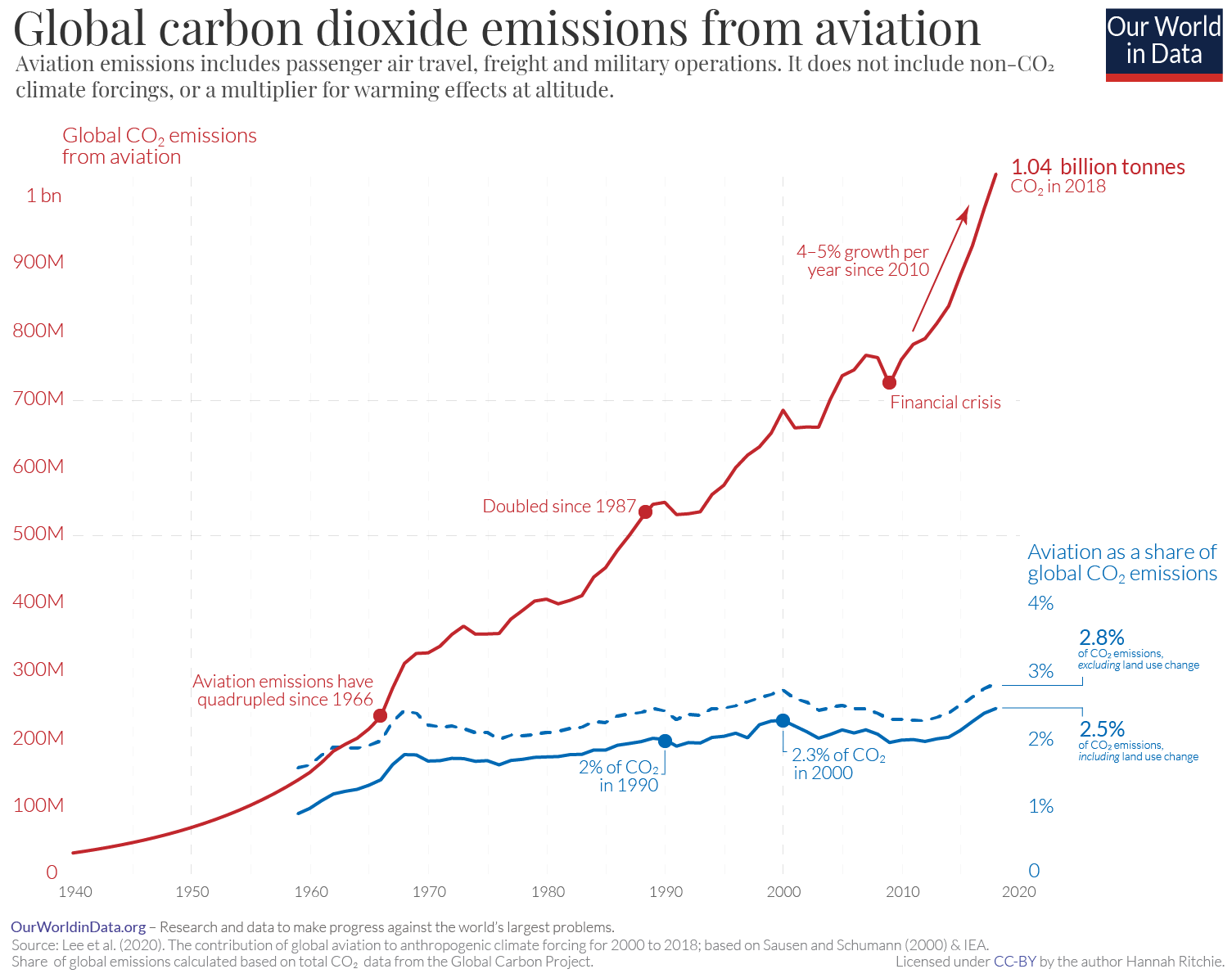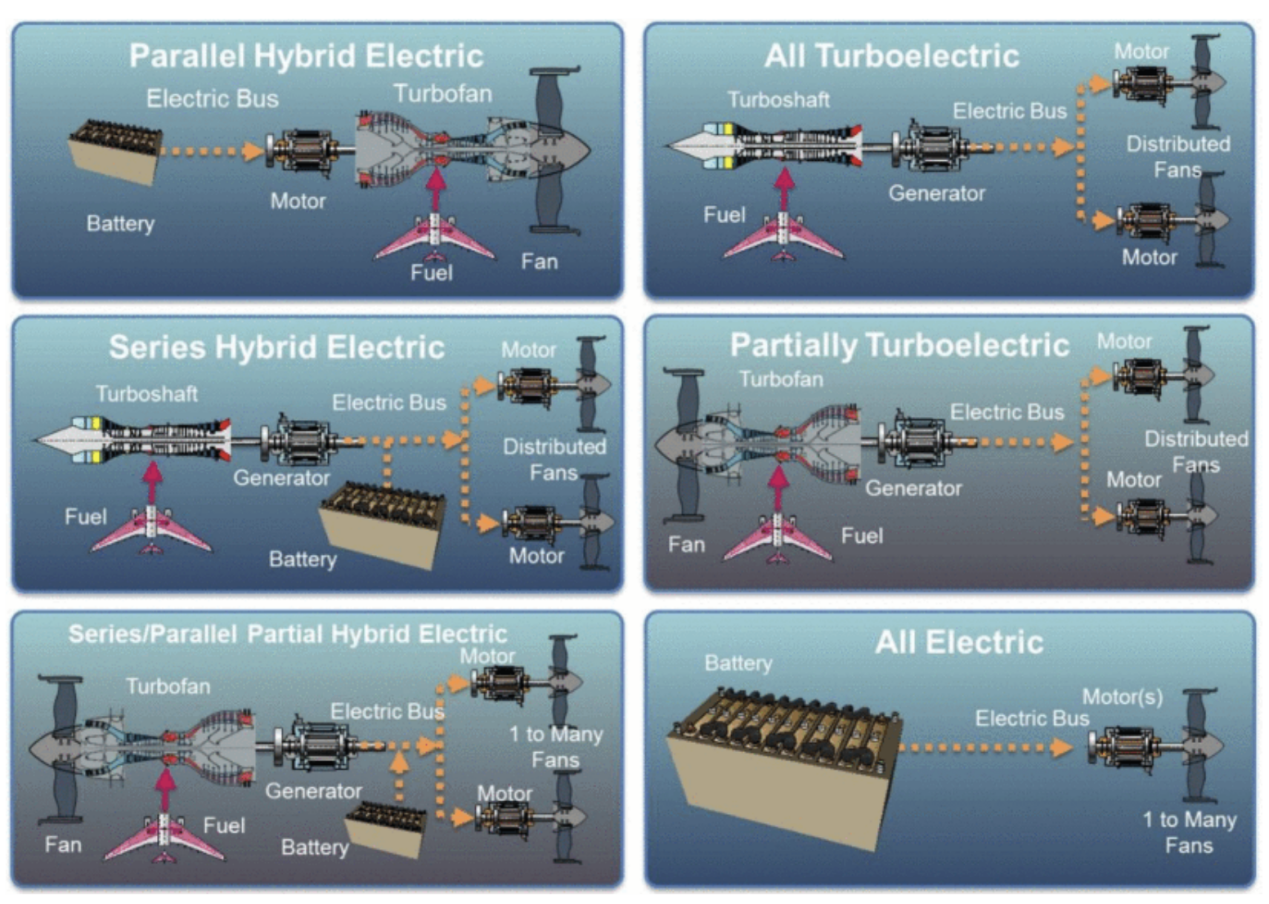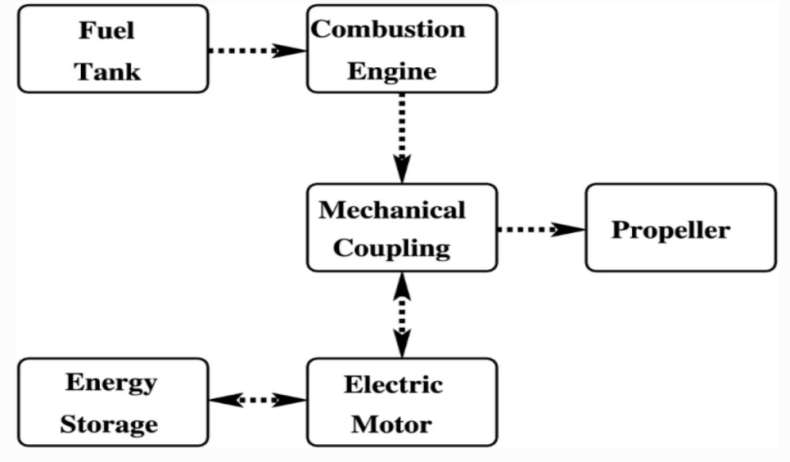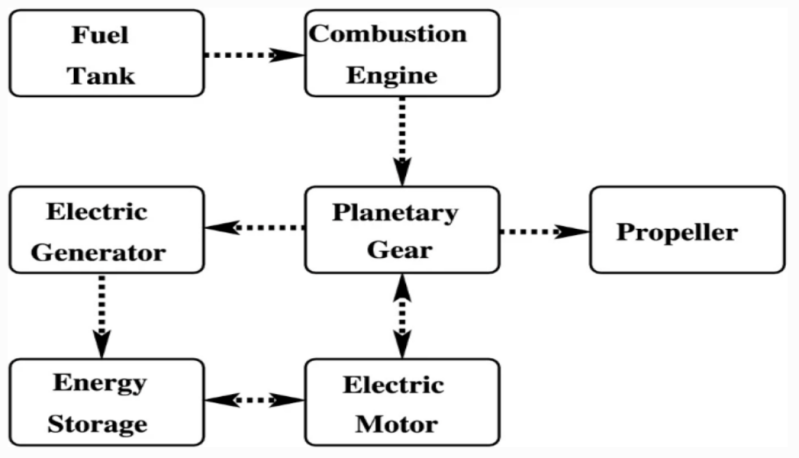1. Introduction
Environmental issues are one of the biggest challenges facing mankind today and as people become more environmentally conscious, more and more industries are choosing to use cleaner energy sources and apply environmentally friendly technologies. And the aerospace community has been researching emerging technologies to address environmental issues for this reason. According to current research and forecasts for aviation technology in the next decade or so, the most likely of all possibilities is electric and hybrid propulsion systems. This paper focuses on three hybrid electric propulsion systems suitable for use in aircraft. The focus is on the advantages and disadvantages of the different propulsion system architectures, as well as the difficulties of their application. The main challenges and solutions for the overall electric propulsion system will also be analyzed in comparison to conventional propulsion systems. But although electric and hybrid propulsion systems are generally considered to be one of the most promising technologies, there are still many aspects of this technology that have not been addressed by the aviation community. As a result, the application of large-scale electric propulsion systems is still relatively remote. However, there are already a number of companies working on the development of aircraft with purely electric and hybrid propulsion systems. And in accordance with NASA and the European Aerospace Commission's emissions requirements for the aviation industry by 2050, more companies in the aviation sector will be moving towards electrification. Increasing government support will also see more and more money invested in this technology.
2. Analysis of the aviation market
2.1. Current aviation market volume
According to aviation analysts, the total number of aircraft in service in the world is approximately 23,600 in 2017. Meanwhile, the International Civil Aviation Organization (ICAO) says that the "global air transport network" doubles in size at least once every 15 years. So by 2032, the "global air transport network" will be twice as large as it is in 2017. With the expansion of the entire aviation market, the impact on the environment has become greater.
2.2. Impact of aviation industry on Environment
The aviation industry actually accounts for only 2.5% of global CO2 emissions (Figure 1), but apart from CO2 emissions, its overall contribution to climate change is much higher [1]. This is because air travel emits not only CO2, but also many other emissions, and these emissions have a complex impact on the climate.

Figure 1. Global carbon dioxide emissions from aviation [1].
Radiative Forcing' refers to the difference between the energy incident on the atmosphere and the energy radiated back into space, and is an important figure in calculating atmospheric warming. The share of aviation, on the other hand, is 3.5% [2]. Even so, the aviation industry's emissions are a relatively small fraction compared to those of other industries. However, without comparing with other industries, the emissions of CO2 from aviation is very large. They have been increasing by 4-5% per year since 2010 and exceeded 1 billion tonnes in 2018. If nothing is done to control this, ICAO expects emissions would account for 25% of global carbon emissions by 2050. In order to better reduce the environmental impact of aviation, many aviation-related organizations and institutions have set gas emission targets.
2.3. Emission reduction target
The Advisory Council for Aeronautics Research in Europe (ACARE) sets out not only long-term but also short-term targets. For the carbon dioxide (CO2) reduction target, a 50% reduction in CO2 emissions in 2020 compared to 2000 was required, but this target has not been achieved. Moreover, a 75% reduction in emissions is required in 2050 (Table 1).
Table 1. ACARE and NASA defined emission targets [3].
ACARE | NASA | |||||
Category | Vision 2020 | Flight path 2050 | N+2 (2025) | N+3 (2030-35) | ||
Fuel | 50% | 75% | 50% | 60% | ||
Relative to 2000 | Relative to 2005 | |||||
NOx | 80% | 90% | 75% | 80% | ||
Relative to 2000 | Relative to CAEP 6 | |||||
Noise | 50% | 65% | 42EPNdB | 71EPNdB | ||
Relative to 2000 | Cum: relative to stage 4 | |||||
In contrast NASA's CO2 emissions requirement is to halve aviation CO2 emissions in 2025 compared to 2005. Both of these two institutions set similar short-term targets of halving CO2 emissions in 15 years. In addition to carbon dioxide, nitrogen oxides (NOx) are also a serious pollutant produced by the burning of paraffin in aircraft, which not only pollutes the atmosphere through the formation of acid rain and particulate matter, but is also harmful to the human respiratory system [4]. For this reason, ACARE and NASA have also set targets for NOx reduction, and the targets set by these two organizations are very similar. ACARE has set NOx emission reduction targets of 80% in the short term and 90% in the long term. NASA, on the other hand, has set a reduction target of 75% in the short term and 80% in the long term. Both of these organizations have notable reduction targets for NOx. To achieve these goals, new technologies have been proposed throughout the aviation industry over the last decade, and one of the most promising and likely to be achieved is the partial or complete electrification of propulsion systems [5].
3. Hybrid-electric aircraft propulsion system
In theory, the principle of converting a conventional propulsion system to an electric propulsion system is not difficult. The conventional propulsion system is powered by an internal combustion engine (ICE), while the electric propulsion system is powered by an electric motor (EM). This is because the use of an electric system is not as polluting as a conventional internal combustion engine burning paraffin and is therefore more environmentally friendly. At the same time with reduced emissions, electric aircraft will have better concealment compared to traditional ICE powered aircraft and so are well suited to unmanned reconnaissance aircraft [6]. But there are also major unresolved problems with electric aircraft propulsion systems; the batteries in electric propulsion systems do not have the means to store enough energy, and electric energy conversion is not as efficient as traditional fossil fuels [7]. If an electric propulsion aircraft need to travel the same distance as a conventional internal combustion engine aircraft, the conversion efficiency and endurance of the electric propulsion system would not be able to support this distance. Since there is no good solution to this problem at the moment and in the years to come, purely electric propulsion systems cannot be used in large numbers.
As scientists in the aviation industry continue their research, a electric related propulsion system is becoming popular - the hybrid electric propulsion system (HEP). This propulsion system cleverly combines an electric propulsion system with a conventional internal combustion engine propulsion system, thus solving the problem of the lack of energy conversion efficiency of the electric propulsion system, and also significantly reducing the environmental pollution of the aircraft and other problems. However, this propulsion system is extremely complex in terms of overall architecture design and management of the hybrid energy source due to the mix of EM and ICE.
HEP is considered to be the best alternative to conventional aircraft for short and medium sailing distances and many companies are heavily developing this technology [8]. In hybrid propulsion systems, the overall energy source is made up of two or more different configurations of power sources. Because of this, the overall system performance is increased by a significant level [6]. As shown in the Figure 2, HEP architectures are defined in six categories: Parallel Hybrid Architecture, Series Hybrid Architecture, Series/Parallel Hybrid Architecture, All Turboelectric Hybrid Architecture, Partially Turboelectric Architecture and All Electric Architecture, where All Turboelectric Hybrid Architecture and Partially Turboelectric Architecture are collectively referred to as Turbo Electric Hybrid Architecture most of the time.

Figure 2. Main electric propulsion architectures [9].
3.1. Parallel hybrid architecture
In the parallel hybrid architecture (see Figure 3), two configurations of power sources, a fuel storage unit output to the internal combustion engine and an electrical storage unit output to the electric motor. These two power providers are capable of providing thrust either simultaneously or separately. Two of the parallel shafts are mechanically coupled.

Figure 3. Parallel Hybrid Architecture [10].
On the combustion side, the fuel stored in the Fuel Tank provides energy to the internal combustion engine, which is burned to produce the final output to the propeller and turns it. On the electrical side, the battery outputs energy to the electric motor, which then turns the propeller. An ingenious feature of this design is that the ICE and EM are coupled so that while the propeller is turned by the ICE, the EM is also driven by a coupling to charge the batteries. In this case, the EM is not acting as a source of thrust power, but as a generator running to charge the power supply.
The advantage of this design is that the overall weight is lighter and the overall design is more idealized. However, the disadvantage is that the overall design is more complex and requires a more advanced propulsion control system. Besides, the coupling of the ICE does not deliver all the power to the propeller, resulting in the thrust not being as good as it could be in some cases.
3.2. Series hybrid architecture
In a series hybrid architecture, there are also two storage components, fuel and battery (see Figure 4). However, unlike the parallel hybrid architecture, only the motor is connected to the propeller in this architecture. Initially, the ICE burns the fuel to deliver power to the electric generator, which in turn delivers the converted electrical energy to the battery and the electric motor. The electrical energy that goes to the motor part will turn the propeller, while the electrical energy that goes to the battery will be stored in the battery and will supply the power to electric motor when needed. One of the cleverness of this design is that when the motor is powered by the electric generator, some of the energy generated by the electric motor is exported to the battery.

Figure 4. Series Hybrid Architecture [10].
The greatest advantage of the series hybrid propulsion system is that the fuel tank provides a constant source of energy with no losses. Because there is no mechanical coupling of the ICE, the overall system is able to operate at optimum power at all times. In addition, the overall system construction is relatively simple and does not require a complex propulsion control system compared to the parallel hybrid propulsion system. However, as the motor is the only component connected to the propeller, it has to provide the thrust for the whole system, so it has to maintain maximum power at all times to keep the aircraft running. And because of the inclusion of the generator, the overall weight becomes greater. This architecture is suitable for lower speed aircraft applications and is less efficient overall than parallel hybrid architectures [10]. It also requires larger batteries and motors to increase the mass and volume of the powertrain [11].
3.3. Series/parallel hybrid architecture
The series/parallel hybrid architecture is a combination of the above two architectures, as shown in Figure 5. In the part of fuel, as with the above two architectures, the fuel is stored in a fuel tank. The fuel is exported to the internal combustion engine where it is burned to produce power.

Figure 5. Series/Parallel Hybrid Architecture.
However, the key point of this architecture is that the combustion engine, electric generator, electric motor and propeller are mechanically connected by a coupling. Part of the energy generated by the internal combustion engine is provided to the propeller to make it spin. The rest of the energy is output to the electric generator and the electric motor, both of which generate electricity and subsequently charge the battery. The electric power from the batteries is also supply the power to the electric motor, which then rotates the propeller via the planetary gear.
As this is a combination of the two architectures above, it combines most of the advantages of the two architectures above (high overall operational efficiency, largely optimal operating power, etc.). At the same time, it is possible to easily change the topology during operation. However, one major disadvantage is that its overall complexity is so high that it is difficult to control the overall thrust in this system very well.
4. Application of hybrid electric propulsion
The development of hybrid electric aircraft is emerging as an important technology for achieving the targets set by the European Commission to reduce gas emissions from aviation transport systems by 2050. As a result, there are a number of large aircraft manufacturers working on the development of hybrid propulsion technology, such as Boeing, Airbus, Embraer and others. At the same time, many other organizations are collaborating on the development of hybrid electric propulsion systems, such as NASA, GE and others.
However, there are still many problems with HEP that have not yet been solved. The overall weight of HEP is heavier than conventional propulsion systems because it has more components such as batteries, which makes the take-off of aircraft more difficult (not enough thrust). Moreover, the complexity of the overall system is still high and it is more difficult for pilots to operate the aircraft at maximum efficiency. Most importantly, because the current technology is not mature enough, the overall cost is very high. Although large hybrid electric aircraft are still far from realistic application due to these challenges, a number of small hybrid electric aircraft have been successfully demonstrated around the world. Various hybrid electric propulsion demonstrators have been developed, most of them in small aircraft with less than four passengers, in a series or parallel configuration, powered by an internal combustion engine.
5. Conclusion
The environmental impact of the aviation industry cannot be underestimated, and there are measures to reduce emissions in the context of an expanding aviation industry. According to the goals set by ACARE and NASA, the aviation industry should focus on reducing CO2, NOx and noise emissions. The technology that has the best chance of meeting the reduction targets is hybrid electric propulsion systems, as they are more environmentally friendly than conventional propulsion systems and easier to implement than pure electric propulsion systems. There are five types of hybrid electric propulsion systems, each with its own advantages and disadvantages, but none of them are used on a large scale in the aviation market. Recent technological developments and the combined efforts of government and industry suggest that the time for the electrification of large aircraft to advance may not be too far away.
References
[1]. Hannah Ritchie, Climate change and flying: what share of global CO2 emissions come from aviation, by our world in data, October 22, 2020. https://ourworldindata.org/co2-emissions-from-aviation.
[2]. Lee D. S. & Fahey D. W. & Skowron A. et al. The contribution of global aviation to anthropogenic climate forcing for 2000 to 2018 [J] Atmospheric Environment, Vol. 244, 117843, 2021, pp. 1-28.
[3]. Wheeler P., Sirimanna T. S., Bozhko S. & Haran K.S., Electric/Hybrid-Electric Aircraft Propulsion Systems [J] IEEE, vol. 109, no. 6, 2021, pp. 1115-1127.
[4]. Guo Y., Zhu L., Wang X., Qiu X., Qian W., Wang L., Assessing environmental impact of NOX and SO2 emissions in textiles production with chemical footprint, Science of The Total Environment, Vol. 831, 154961, 2022.
[5]. Kellermann H., Fuhrmann S., Shamiyeh M., Hornung M., Design of a Battery Cooling System for Hybrid Electric Aircraft, American Institute of Aeronautics and Astronautics, May 2, 2022.
[6]. Xie Y., Savvarisal A., Tsourdos A., Zhang D., Gu J., Review of hybrid electric powered aircraft, its conceptual design and energy management methodologies, Chinese Journal of Aeronautics, Vol. 34, no. 4, 2021, pp.432-450.
[7]. Riboldi C.E.D, Gualdoni F., An integrated approach to the preliminary weight sizing of small electric aircraft, Aerospace Science and Technology, Vol. 58, 2016, pp.134-149.
[8]. IATA, Aircraft Technology Roadmap to 2050, https://www.iata.org/contentassets/8d19e716636a47c184e7221c77563c93/Technology-roadmap-2050.pdf.
[9]. Bowman C. L. & Felder J. L. & Marien T.V, Turbo- and Hybrid-Electrified Aircraft Propulsion Concepts for Commercial Transport, 2018 AIAA/IEEE Electric Aircraft Technologies Symposium (EATS), 2018, pp. 1-8.
[10]. Rendón, M. A. & Sánchez R.C.D., Gallo M. J. Anzai A. H. Aircraft Hybrid-Electric Propulsion: Development Trends, Challenges and Opportunities. J Control Autom Electr Syst 32, 1244–1268, 2021.
[11]. Donateo T., Ficarella A. & Spedicato L, A method to analyze and optimize hybrid electric architecture applied to unmanned aerial vehicles, June 19, 2018.
Cite this article
Huang,Z. (2023). Electric and hybrid-electric aircraft propulsion systems: development, difficulties and opportunities. Theoretical and Natural Science,5,28-34.
Data availability
The datasets used and/or analyzed during the current study will be available from the authors upon reasonable request.
Disclaimer/Publisher's Note
The statements, opinions and data contained in all publications are solely those of the individual author(s) and contributor(s) and not of EWA Publishing and/or the editor(s). EWA Publishing and/or the editor(s) disclaim responsibility for any injury to people or property resulting from any ideas, methods, instructions or products referred to in the content.
About volume
Volume title: Proceedings of the 2nd International Conference on Computing Innovation and Applied Physics (CONF-CIAP 2023)
© 2024 by the author(s). Licensee EWA Publishing, Oxford, UK. This article is an open access article distributed under the terms and
conditions of the Creative Commons Attribution (CC BY) license. Authors who
publish this series agree to the following terms:
1. Authors retain copyright and grant the series right of first publication with the work simultaneously licensed under a Creative Commons
Attribution License that allows others to share the work with an acknowledgment of the work's authorship and initial publication in this
series.
2. Authors are able to enter into separate, additional contractual arrangements for the non-exclusive distribution of the series's published
version of the work (e.g., post it to an institutional repository or publish it in a book), with an acknowledgment of its initial
publication in this series.
3. Authors are permitted and encouraged to post their work online (e.g., in institutional repositories or on their website) prior to and
during the submission process, as it can lead to productive exchanges, as well as earlier and greater citation of published work (See
Open access policy for details).
References
[1]. Hannah Ritchie, Climate change and flying: what share of global CO2 emissions come from aviation, by our world in data, October 22, 2020. https://ourworldindata.org/co2-emissions-from-aviation.
[2]. Lee D. S. & Fahey D. W. & Skowron A. et al. The contribution of global aviation to anthropogenic climate forcing for 2000 to 2018 [J] Atmospheric Environment, Vol. 244, 117843, 2021, pp. 1-28.
[3]. Wheeler P., Sirimanna T. S., Bozhko S. & Haran K.S., Electric/Hybrid-Electric Aircraft Propulsion Systems [J] IEEE, vol. 109, no. 6, 2021, pp. 1115-1127.
[4]. Guo Y., Zhu L., Wang X., Qiu X., Qian W., Wang L., Assessing environmental impact of NOX and SO2 emissions in textiles production with chemical footprint, Science of The Total Environment, Vol. 831, 154961, 2022.
[5]. Kellermann H., Fuhrmann S., Shamiyeh M., Hornung M., Design of a Battery Cooling System for Hybrid Electric Aircraft, American Institute of Aeronautics and Astronautics, May 2, 2022.
[6]. Xie Y., Savvarisal A., Tsourdos A., Zhang D., Gu J., Review of hybrid electric powered aircraft, its conceptual design and energy management methodologies, Chinese Journal of Aeronautics, Vol. 34, no. 4, 2021, pp.432-450.
[7]. Riboldi C.E.D, Gualdoni F., An integrated approach to the preliminary weight sizing of small electric aircraft, Aerospace Science and Technology, Vol. 58, 2016, pp.134-149.
[8]. IATA, Aircraft Technology Roadmap to 2050, https://www.iata.org/contentassets/8d19e716636a47c184e7221c77563c93/Technology-roadmap-2050.pdf.
[9]. Bowman C. L. & Felder J. L. & Marien T.V, Turbo- and Hybrid-Electrified Aircraft Propulsion Concepts for Commercial Transport, 2018 AIAA/IEEE Electric Aircraft Technologies Symposium (EATS), 2018, pp. 1-8.
[10]. Rendón, M. A. & Sánchez R.C.D., Gallo M. J. Anzai A. H. Aircraft Hybrid-Electric Propulsion: Development Trends, Challenges and Opportunities. J Control Autom Electr Syst 32, 1244–1268, 2021.
[11]. Donateo T., Ficarella A. & Spedicato L, A method to analyze and optimize hybrid electric architecture applied to unmanned aerial vehicles, June 19, 2018.









